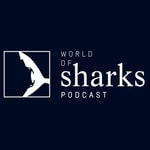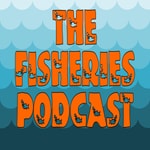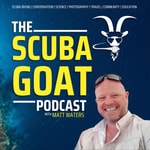Sharkpedia – Détails, épisodes et analyse
Détails du podcast
Informations techniques et générales issues du flux RSS du podcast.

Sharkpedia
Meghan Holst and Amani Webber-Schultz
Fréquence : 1 épisode/33j. Total Éps: 33

Classements récents
Dernières positions dans les classements Apple Podcasts et Spotify.
Apple Podcasts
🇺🇸 États-Unis - nature
31/07/2025#95🇺🇸 États-Unis - nature
28/07/2025#91🇬🇧 Grande Bretagne - nature
27/07/2025#84🇺🇸 États-Unis - nature
27/07/2025#64🇬🇧 Grande Bretagne - nature
26/07/2025#65🇬🇧 Grande Bretagne - nature
24/07/2025#95🇬🇧 Grande Bretagne - nature
23/07/2025#77🇺🇸 États-Unis - nature
23/07/2025#94🇬🇧 Grande Bretagne - nature
22/07/2025#53🇺🇸 États-Unis - nature
19/07/2025#74
Spotify
Aucun classement récent disponible
Liens partagés entre épisodes et podcasts
Liens présents dans les descriptions d'épisodes et autres podcasts les utilisant également.
See all- https://www.instagram.com/sharkpediapod
6 partages
Qualité et score du flux RSS
Évaluation technique de la qualité et de la structure du flux RSS.
See allScore global : 43%
Historique des publications
Répartition mensuelle des publications d'épisodes au fil des années.
Shifts in Bull Shark Body Form Through Their Life History with Joel Gayford
lundi 18 mars 2024 • Durée 50:39
Did you know that shark body form can change as they grow? Why does that happen? Why does it matter? Find out this week on our episode investigating these questions of bull sharks with Joel Gayford!
Title: Ontogenetic Shifts in body form in the bull shark Carcharhinus leucas
Summary: It is believed that body growth is strongly correlated to trophic and spatial ecology through ontogeny, or as a shark ages. Gayford et al. used bull sharks as their study species to better understand morphological growth at many different locations along a shark's body. They found shifts in functional demands across the body through ontogeny, seemingly driven by selective pressures relating to trophic and spatial ecology. They also found significant differences in scaling trends between life stages and sexes. They ultimately discuss the implications of their results for existing ecomorphological hypotheses and provide a robust study to add to much needed research in this area. You can follow Joel Gayford @sharkmeasurements on instagram
Follow us on Instagram @Sharkpediapod
Submit an article for us to review on the podcast!
Defining Shark Nursery Habitats with Dr. Michelle Heupel
lundi 4 mars 2024 • Durée 55:54
Juvenile shark presence in an area does NOT mean that that area is a shark pupping or nursery ground. So how do we know what actually makes a shark nursery ground? What even IS a nursery ground? Is it different than a pupping ground? Why does any of this matter? Find out this week with our special guest, Dr. Michelle Heupel!
Dr. Heupel joins us to talk about her article, "Shark nursery areas: concepts, definition, characterization and assumptions" (Heupel et al. 2007).
Article Summary:
Shark nursery habitats are critical areas that sharks rely on for their early life stages. However, the criteria defining shark nursery grounds has been inconsistent through history. These inconsistencies can make management strategies more difficult, as some definitions could imply that all coastal areas are nursery habitats, and other definitions are insufficient. In this study, Heupel et al. propose a new definition for shark nursery habitats that will more accurately pinpoint Essential Fish Habitat. That definition is: (1) sharks are more commonly encountered in the area than other areas; (2) sharks have a tendency to remain or return for extended periods; and (3) the area or habitat is repeatedly used across years. These criteria make the definition of shark nursery areas more compatible with those for other aquatic species. The improved definition of this concept will provide more valuable information for fisheries managers and shark biologists.
You can follow Dr. Heupel @michelleheupel on instagram, and follow her work on Research Gate and Google Scholar!
Shark Noses with Dr. Lauren Simonitis
Saison 2 · Épisode 7
lundi 8 août 2022 • Durée 55:51
This week we join Kate McKinnon as Miss Frizzle on the Magic School Bus to explore shark noses up close!
Just kidding. But we do have shark-nose-specialist Dr. Lauren Simonitis! We break down her article Microstructure of the BonnetHead Shark (Sphyrna tiburo) Olfactory Rosette. (Simonitis & Marshall 2022). Learn all you could need to know about shark noses and more!
Summary: The weird shape of hammerhead sharks means that their naris or noses are also weirdly shaped. Previous research has shown that the flow of water in hammerhead noses has a complex structure that changes the pressure and therefore changes the velocity of water in the nose itself. Simonitis et al., aim to describe the microstructure of the olfactory rosette of the bonnethead shark , sphyrna tiburo, and investigate differences in the individual lamellae themselves within the rosette. Specifically they looked at the degree of secondary folding, percent sensory area, and the relative surface area of the lamellae. This is the first time the olfactory nerve layer has been visually tracked through a shark lamella. They found that olfactory lamellae in areas of the olfactory organ that experience faster water flow, have a larger percentage of sensory area and more secondary folds compared to those exposed to lower water velocities. Their findings imply that there may be less sensitive portions along the rosette. Future work should look at flow and sensitivity inside a shark's nose with this information in mind.
Follow Dr. Simonitis on Twitter and Instagram @OceanExplauren
Follow some of Dr. Simonitis' work on Twitter and Instagram @MISS_Elasmo
Follow Sharkpedia on Instagram and Twitter @SharkpediaPod
Connect with Sharkpedia:
Email: thesharkpediapodcast@gmail.com
Climate Change Impacts on Marine Apex Predator Distribution with Dr. Yuri Niella
Saison 2 · Épisode 6
mardi 26 juillet 2022 • Durée 53:25
Just in time for Shark Week, we're going down under to investigate what warming waters will do to the distribution of tiger sharks on the east coast of Australia with tiger shark expert, Dr. Yuri Niella!
This week we break down Dr. Yuri Niella et al. (2021) article, "Forecasting intraspecific changes in distribution of a wide-ranging marine predator under climate change."
Article Summary: (modified abstract)
Climate change is causing animal distributions to shift in response to changing temperatures. Typically shifts in these behaviors are evaluated at the species level, but in this study, Nuriella et al. studied behavioral shifts at the individual level. They investigated 115 tiger sharks, Galeocerdo cuvier, from 2002 to 2020, and evaluated how behavior and distribution differed between sex and maturation class (meaning, juveniles or adults). With this long-term data set, Nuriella et al. modeled how behavior and distribution may continue to change in tiger sharks to 2030, and included environmental factoers and predicted occurence of potential prey. Generalised Linear and Additive Models revealed that water temperature change, particularly at higher latitudes, was the factor most associated with shark movements. Females dispersed southwards during periods of warming temperatures, and while juvenile females preferred a narrow thermal range between 22 and 23 °C, adult female and juvenile male presence was correlated with either lower (<22 °C) or higher (>23 °C) temperatures. During La Niña, sharks moved towards higher latitudes and used shallower isobaths. Inclusion of predicted distribution of their putative prey signifcantly improved projections of suitable habitats for all shark classes, compared to simpler models using temperature alone. Tiger shark range of the east coast of Australia is predicted to extend~3.5° south towards the east coast of Tasmania, particularly for juvenile males. This study will assist in evaluating the consequences of climate change to species distribution.
Follow Dr. Niella on Twitter @Yuri_Niella
Follow Sharkpedia on Instagram and Twitter @SharkpediaPod
Connect with Sharkpedia:
Email: thesharkpediapodcast@gmail.com
Perpetual Tooth Regeneration in Sharks with Dr. Gareth
Saison 2 · Épisode 5
lundi 6 juin 2022 • Durée 01:04:09
Have you ever wondered how sharks perpetually regenerate their teeth? Why can't humans do the same thing, or can they?! This week expert Dr. Gareth Fraser joins us to tell us all about this special shark superpower.
We jump into Dr. Fraser's article, "The Dental Lamina: An Essential Structure for Perpetual Tooth Regeneration in Sharks" (Fraser et al. 2020)
Article Summary:
Methods of studying evolutionary, development, and regenerative biology have been improving over the past few years. This paper utilizes the embryonic small-spotted catshark (Scyliorhinus canicula) using new techniques that allow them to research key developmental and regenerative processes that classical models can not. The development of shark teeth and their subsequent regeneration is a lesser studied area of research. Fraser et al. explore the role of the dental lamina, the tissue that is the first evidence of teeth in an embryo, in the development of highly regenerative dentition in sharks. Sharks regenerate whole teeth at a time as opposed to other systems such as the murine model where incisors exhibit continuous renewal and growth of the same tooth. Studying shark teeth on a genetic level can provide important context into the evolution of vertebrate tooth regeneration.
Learn more about Dr. Fraser's work at: www.fraser-lab.net
Follow Dr. Fraser on Twitter @garethjfraser
Follow Sharkpedia on Instagram and Twitter @SharkpediaPod
Connect with Sharkpedia:
Email: thesharkpediapodcast@gmail.com
Manta Ray Swimming Behavior with Vicky Fong
Saison 2 · Épisode 4
lundi 23 mai 2022 • Durée 47:23
Manta ray research using drones?! This week guest expert Vicky Fong joins us to tell us all about the swimming behavior of manta rays, and why understanding these behaviors can be important for their conservation!
We jump into Vicky's article, "Using Drones to Assess Volitional Swimming Kinematics of Manta Ray Behaviors in the Wild" (Fong, Hoffmann, and Pate; 2022)
Article Summary: (abstract)
Drones have become increasingly popular tools to study marine megafauna but are underutilized in batoid research. They used drones to collect video data of manta ray (Mobula cf. birostris) swimming and assessed behavior-specific kinematics in Kinovea, a semi-automated point-tracking software. They describe a ‘resting’ behavior of mantas making use of strong currents in man-made inlets in addition to known ‘traveling’ and ‘feeding’ behaviors. No significant differences were found between the swimming speed of traveling and feeding behaviors, although feeding mantas had a significantly higher wingbeat frequency than traveling mantas. Resting mantas swam at a significantly slower speed and wingbeat frequency, suggesting that they were continuously swimming with the minimum effort required to maintain position and buoyancy. Swimming speed and wingbeat frequency of traveling and feeding behaviors overlapped, which could point to other factors such as prey availability and a transitional behavior, influencing how manta rays swim. These baseline swimming kinematic data have valuable applications to other emerging technologies in manta ray research.
Follow Vicky on Instagram @vicky.fong
Follow the Florida Manta Project on Instagram @MarineMegaFauna and Jessica Pate @FloridaMantaGirl
Follow Sharkpedia on Instagram and Twitter @SharkpediaPod
Connect with Sharkpedia:
Email: thesharkpediapodcast@gmail.com
Tiger Shark Teeth with Julia Türtscher
Saison 2 · Épisode 3
mercredi 11 mai 2022 • Durée 56:28
Everything you need to know about Tiger Shark teeth! This week PhD student Julia Türtscher joins ut to tell us amazing things about shark teeth, like, did you know males and females can have differently shaped teeth? Or that teeth can change SEASONALLY?! Learn everything you need to know about shark teeth and what Julia and her team learned about tiger sharks from preserved jaws!
This week we dive into Julia's article, "Heterodonty and ontogenetic shift dynamics in the dentition of the tiger shark Galeocerdo cuvier (Chondrichthyes, Galeocerdidae)" Türtscher et al. (2022)
Article Summary:
The lifelong tooth replacement in elasmobranch fishes (sharks, rays, and skates) has led to the assemblage of a great number of teeth from fossil and extant species. Evaluating tooth morphology is important for taxonomic descriptions, and understanding how elasmobranchs have evolved when comparing extant teeth to fossil teeth. Heterodonty (various tooth morphologies) occurs in most elasmobranch species and has proven to be one of the main challenges for comparing extant and fossil teeth. Although numerous shark species are discovered and described every year, detailed descriptions of tooth morphologies and heterodonty patterns are lacking or are only insufficiently known for most species. In this study, Türtscher and colleagues generate 2D models of tiger shark teeth Galeocerdo cuvier to describe how teeth develop and change from embryo to adult. Türtscher and colleagues' results reveal rather gradual and subtle shape changes from embryos to adults, mostly characterized by the increasing size and complexity of the teeth. They furthermore provide the first comprehensive description of embryonic dental morphologies in tiger sharks. Finally, multiple cases of tooth file reversal are described. This study contributes to our knowledge of dental traits across age stages in the extant tiger shark G. cuvier and provides a baseline for further studies on the dental variation in sharks. Therefore, it has the potential to assist in elucidating the underlying developmental and evolutionary processes behind the vast dental diversity observed in elasmobranch fishes today and in deep time.
Follow Julia Türtscher on Twitter @JuTuertscher and Instagram @julia_tuertscher
Learn about shark sightings in the Mediterranean @haisichtungen_mittelmeer
Follow Sharkpedia on Instagram and Twitter @SharkpediaPod
Connect with Sharkpedia:
Email: thesharkpediapodcast@gmail.com
Basking Sharks Along the West Coast USA with Dr. Alex McInturf
Saison 2 · Épisode 2
lundi 25 avril 2022 • Durée 57:53
Basking sharks on the West Coast USA?!?! Dr. Alex McInturf returns from season 1 and gives us a MASSIVE update about her career, basking shark populations, and the tea on basking shark conservation. Did you know basking sharks were along the West Coast USA?! Most don't, because these sightings are now extremely rare.
This week we breakdown Dr. McInturf's article, "“Spatial Distribution, Temporal Changes, and Knowledge Gaps in Basking Shark (Cetorhinus maximus) Sightings in the California Current Ecosystem” McInturf et al. 2022
Article Summary:
Basking sharks are the world’s second largest fish, and one of the three filter-feeding shark species. Basking sharks are very slow growing, long-lived animals that have a 20-30 year generation time (meaning, there is 20-30 years between two consecutive generations). This species is found around the world and is capable of large-scale migrations. Basking sharks will aggregate during certain months, known as basking shark “hot spots”. Hotspots were observed Eastern North Pacific coastline and California Current Ecosystem, but are now rarely observed. McInturf et al. (2022) compiled recent and historical datasets to examine temporal patterns of basking shark sightings in the California Current Ecosystem, and determine the spatial, temporal, and environmental drivers that have affected basking shark presence and distribution for the last 50 years. Their research showed that there were nearly 4,000 sharks sighted per year until the 1990s, after which sightings are extremely rare. There was also a 50% decline in basking shark school size. McInturf et al. provide insight to why the basking shark population declined, and offer suggestions for future research and conservation efforts.
Learn more about Dr. McInturf at https://alexandramcinturf.squarespace.com/
Contact the Irish Basking Shark Group: at https://www.baskingshark.ie/
Follow Dr. McInturf on Instagram and Twitter @DrSurfNTurf
Contact Dr. McInturf at alexandra.mcinturf@oregonstate.edu
Follow Sharkpedia on Instagram and Twitter @SharkpediaPod
Connect with Sharkpedia:
Email: thesharkpediapodcast@gmail.com
Shark Stress Physiology with Jake Jerome
Saison 2 · Épisode 1
mardi 5 avril 2022 • Durée 38:46
SEASON 2 IS HERE!! We are kicking off the season with Jake Jerome, one of Field School's very own Assistant Director of Program Development and Intern Coordinator. What is shark stress? How do you even go about measuring shark stress? What do we see behaviorally, and what does this mean for them physiologically? Learn more this week with shark physiologist Jake Jerome!
This week we breakdown Jake's article, "Integrating reflexes with physiological measures to evaluate coastal shark stress response to capture" (Jerome et al 2017). Want a copy but can't access it? Send us a message on Instagram or Twitter!
Article Summary:
To better understand physiological stress response to capture, Jerome et al. used conventional blood physiology endpoints such as glucose, lactate, and hematocrit, and assessed 5 reflex responses on sandbar sharks, blacktop sharks, great hammerhead sharks, and nurse sharks species after capture. Their objectives were to test for relationships between physiological variables and hooking duration, shark species, and body size, evaluate for relationships between reflex impairments and hook time, species, and body size, and determine if there were any relationships between the physiological parameter and reflex impairments. Physiological stress response varied widely between the 4 species with nurse sharks constantly displaying the lowest levels of physiological disturbance and great hammerheads displaying the highest. They found that lactate was the most consistent and useful indicator for determining stress in all species. This research is especially important for better understanding the physiological response sharks have to being caught either in recreational catch and release fishing or commercial fisheries.
Follow:
You can follow Jake on Twitter and Instagram @jake_jerome14
Learn more about Jake at Field School at: https://www.getintothefield.com/faculty--staff.html
Follow Sharkpedia on Instagram and Twitter @SharkpediaPod
Connect with Sharkpedia:
Email: thesharkpediapodcast@gmail.com
Season 1 Recap
lundi 6 décembre 2021 • Durée 44:50
That's right, Meghan and Amani are wrapping up Season 1 of Sharkpedia! Jump in for an episode recapping how the podcast has grown, some of our favorite parts of Season 1, and things to look forward to in Season 2! Don't worry - We'll be back in just a few short weeks with new guests and papers to dive into!
Please don't forget to rate and review Sharkpedia wherever you get your podcasts so that other sharkies can find us for Season 2!
Follow Sharkpedia on Instagram and Twitter @SharkpediaPod
Connect with Sharkpedia:
Email: thesharkpediapodcast@gmail.com






